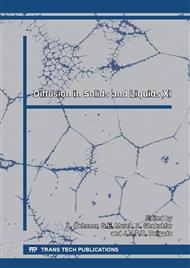p.116
p.119
p.125
p.131
p.135
p.142
p.148
p.152
p.157
Energy Model Applied to Renewable Energy in Housing Systems
Abstract:
In recent decades, global events and extreme changes make sustainable development and renewable energy a frequent subject of discussion in numerous global meetings. To analyze the energy matrix of a region in order to optimize it sustainably, is a way to reduce the impacts of these changes. Currently, the world energy matrix is made up of 81.0 % of non-renewable sources (78.4% oil and oil products, natural gas and coal, and 2.6 % uranium) and 19.0 % from renewable sources, (traditional biomass 9.0 %, bio-heat 2.6 %, 3.8% hydropower and 3.6% others renewable energies such as solar, wind, geothermal, biodiesel, ethanol, ocean power, etc.). In this sense, the aim of this work is to establish a sustainable model of energy planning in a region taking into account local characteristics and the efficiency in the power generation for residential systems. Energy demand data was collected from different Brazilian companies. From the data obtained, it was found that the method/model used is very efficient for the case study related to the energy efficiency of housing systems using renewable energy.
Info:
Periodical:
Pages:
135-141
Citation:
Online since:
July 2016
Authors:
Keywords:
Price:
Сopyright:
© 2016 Trans Tech Publications Ltd. All Rights Reserved
Share:
Citation:


